Tesla’s Brand Story: How Elon Musk’s Iconic Company Got Its Name?
By Kushal Shrestha - Mar 14, 2025 | Updated: March 16, 2025 | 14 min read
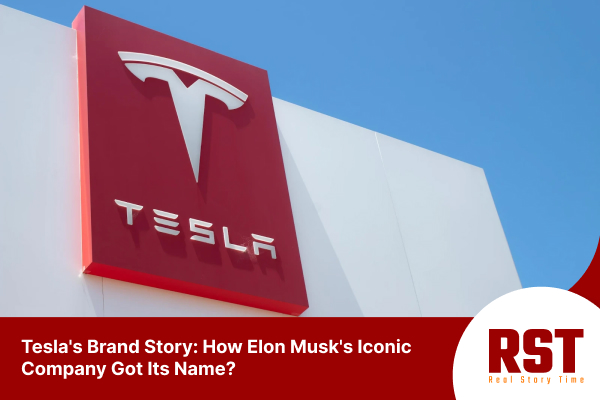
“Where did the name Tesla come from?” It prompts curiosity about a company that has changed the automotive and energy industries in its own right. Tesla has not simply become a name; it has become an honor to the one visionary whose idea electrified the world. Setting up an entire company, Tesla, in 2003 would create a worldwide transition to sustainable energy using electric vehicles, solar systems, and other transformative energy alternatives. In essence, the spirit of Tesla is an innovative technology and an emblem of the fearless innovation of the industry. The company operates under the responsibility of Elon Musk, but where did the name Tesla come from?
Every brand has a story, and Tesla has its own too. Let’s find out more!
The Origin Story: Where did the name Tesla come from?
Many wonder, “Where did the name Tesla come from?”. The company Tesla got its name from Nikola Tesla, who remains significant today both as a Serbian-American inventor and an inventor born in 1856.
Through his development of alternative current power systems, Nikola Tesla created efficient power delivery along transmission lines while working on establishing electric vehicles as a commercial sector. Through his advanced concepts for wireless power transfer, the company carries forward its forward-thinking mission.
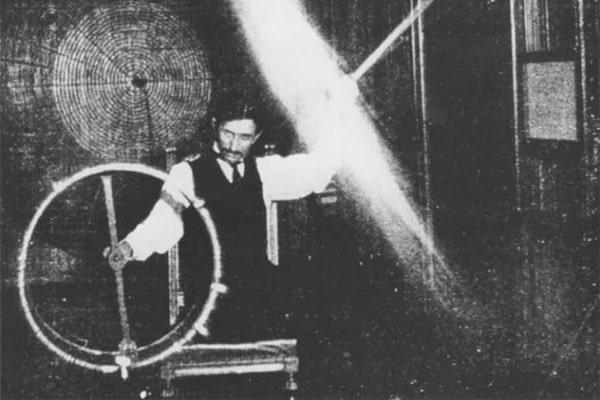
Did Elon Musk come up with the name Tesla?
Having discovered that the company Tesla is named after the famous inventor Nikola Tesla, the follow-up question is about who chose the company’s name, Tesla Motors. Did Elon Musk come up with the name?
Many people still think Elon Musk founded Tesla. Tesla and Elon Musk have merged names and become inseparable in modern times.

It was not Elon Musk who established Tesla.
Martin Eberhard and Marc Tarpenning established Tesla Motors in 2003 to fight climate change and decrease dependence on fossil fuels. As a result of this revolutionary vehicle advancement, lithium-ion battery technology in electric vehicles has improved the performance level of gasoline-powered cars.
On April 15, 1997, Eberhard, with his computer and electrical engineering expertise, teamed up with Tarpenning, who had experience in computer science, to establish NuvoMedia as an e-book venture. The Rocket eBook entered the market in 1998. NuvoMedia received $187 million from Gemstar–TV Guide International when they acquired the company in 2000.
In July 2003, the two entrepreneurs entered the automotive market because they grew dissatisfied with conventional cars that ran on gasoline. The entrepreneurs created a plan for electric cars designed to be environmentally friendly, high-performance, and desirable. The company needed a name to identify its new business.
The company started its mission by facing many different obstacles along the way. Creating their initial launch product, the Tesla Roadster, required serious adjustments because they first misunderstood the complete financial requirements. The company encountered technological problems when experimenting with current EV capabilities.
In 2004, Elon Musk co-founded PayPal and noticed these entrepreneurs when Tarpenning took Eberhard to meet him in his spaceship meeting. Eberhard later emailed Musk, introducing him to Tesla concepts, and they met again. The meeting that was planned for twenty minutes lasted for two hours.
Musk invested more than US$30 million after initial investment, then joined the board and subsequently became the CEO of Tesla in 2008. During its startup phase, with outstanding leadership and financing from Musk, Tesla survived the hard years.
However, it was not Elon Musk who named the company.
The Disney Magic Behind Tesla’s Name; Originated in Disneyland
You might wonder what the name Tesla has to do with Disneyland.
Well, creativity sometimes sparks while having fun.
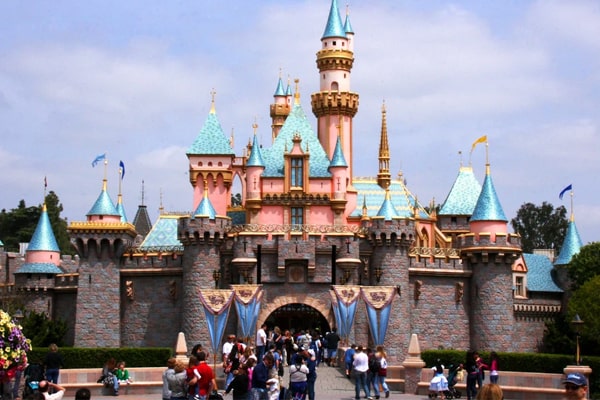
Tesla co-founder Martin Eberhard devoted many months to identifying the perfect name as part of his search. Eberhard searched for a company name that accurately conveyed his electric car performance aspects while being easy to remember. Searching for a perfect name to represent his business vision took longer than expected because he checked multiple options.
January 25th, 2003, marked a critical moment when Eberhard visited Disneyland with his girlfriend Carolyn (now his wife). It was a date tour. The pair then moved between the park grounds and entered the Pirates of the Caribbean ride to dine at their designated restaurant, Blue Bayou.
The discussion between Eberhard and his date led to him sharing his intent to create a tribute to Nikola Tesla because Tesla developed the AC induction motor, a leading technology for electric car systems.
Eberhard discussed his wish to pay tribute to Nikola Tesla because of his AC induction motor technology breakthrough that would lead to charging his electric vehicles.
Suddenly, he said to her, “What about Tesla Motors?”And she said, “Perfect! Now get to work making your car.”
Following this inspiration, co-founder Marc Tarpenning decided to buy the TeslaMotors.com domain name on April 23, 2003. July 1st, 2003, became the official date the company was incorporated while setting new benchmarks for the automotive industry.
Eberhard and Tarpenning established their first office in a professional building in downtown Menlo Park, California. In a resourceful move, they turned the sign for “Bushtracks African Expeditions,” which hung in their rented space and wrote “Tesla Motors” on the back, creating the company’s first official sign.
A discussion at Disneyland developed into global automotive leadership, showing that inspiration often arises without warning. Tesla uses the name to honor Nikola Tesla while demonstrating its dedication to superior electric vehicle technology. The automotive industry has undergone a complete transformation because of a fundamental idea: breakthroughs sometimes emerge when inspiration strikes in unexpected situations.
The Evolution of Tesla’s Iconic Logo
From Shield to Simplicity: A Visual Journey
Since its establishment in 2003, Tesla has had many logos. These show its evolution from a startup disrupting conventions in the automotive world to a worldwide force for electric vehicles and sustainable energy products.
Original Logo (2003-2017)
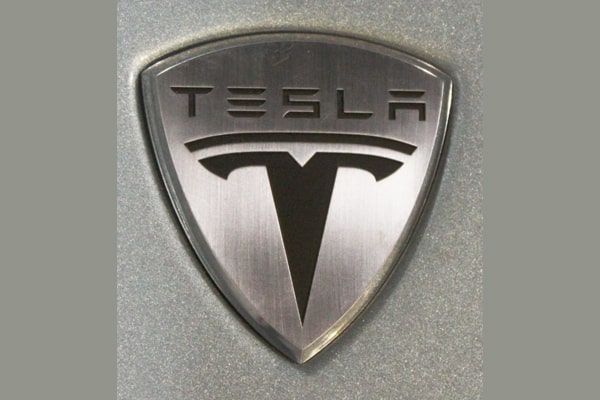
The company presented its first logo, created by RO Studio, featuring a shield with an artistic interpretation of its letter “T” evenly placed at the center. This design served multiple purposes:
- The shield represents safety and reliability, which are core principles Tesla uses to develop vehicles that defend users and preserve the environment.
- The “T” shape inside the shield displays the magnetic layout of electric motors used in Tesla vehicles while directly honoring Nikola Tesla’s invention.
- A large shield contained the name ’Tesla Motors’, reflecting the company’s then-automobile-centric identity.
Gray and black tones initially defined the color scheme, conveying a sense of sophistication and technological advancement.
Redesigned Logo (2017-Present)
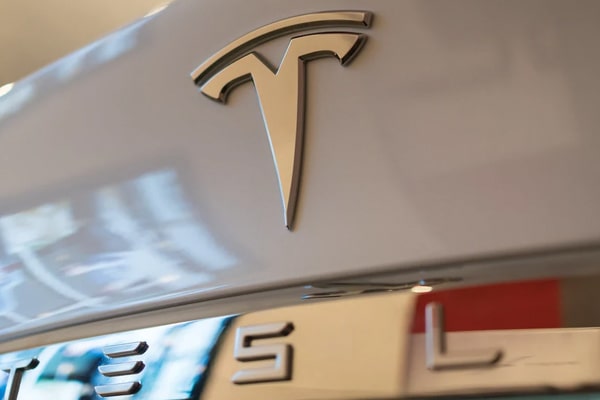
The Tesla logo has transformed, just as the company has expanded and diversified its products according to its branding. Tesla changed its logo in 2017, keeping the central “T” shape while smoothing and modernizing its appearance. The new design removed the word “Tesla” from the emblem, giving the “T” a standalone presence as a powerful and instantly recognizable symbol.
According to the new Tesla logo story, the new design needed to be more flexible and scalable to be deployable on various consumer and motorized goods across different platforms and touches. The simplified “T” emblem was appropriate for digital media, product branding, and marketing materials. Some of the key changes the new Tesla logo design has undertaken are :
- Simplified and Modernized: It ditched the shield element for a more modern, minimalist look that fits the evolving Tesla design language.
- Standalone “T”: The “T” symbol conveys Tesla’s brand character, expressing strength and reliability.
- Reflects Growth: Tesla redesigned its logo to build a significant automotive business from its roots as an electric vehicle specialist.
- Unified Brand: The simplified logo feature enabled Tesla to unite its multiple products within a cohesive brand while entering the solar energy solutions and energy storage systems market.
- Clean Aesthetic: The logo’s minimalist design strategy creates a futuristic look, demonstrating Tesla’s core business identity and primary product direction.
Symbolism and Design Elements
The Tesla logo goes beyond a simple stylized letter; it’s a well-thought-out symbol of a company’s mission and values:
- Electric Motor Representation: The “T” is an electric motor’s top-view cross-section, with the upper horizontal line representing the stator and the vertical line representing one of the rotor poles.
- Minimalist Aesthetic: Tesla’s design philosophy manifests through clean lines and a simple form that eliminates unneeded details to deliver functional beauty.
- Color Palette: Red represents passion and transformative change, and black and white represent modernity, power, and luxury.
The meaning of the Tesla logo has evolved along with the company throughout the years. From the safety and reliability-focused shield emblem we first introduced, the new minimalistic, versatile design showcases Tesla’s passion for innovation, sustainability, and technological excellence. The logo embodies a sense of evolution and innovation as Tesla expands its offerings and impacts markets worldwide.
When was the first Tesla car made?
Tesla Motors began operations in 2003 under the leadership of Martin Eberhard and Marc Tarpenning to develop electric vehicles that were desirable enough to compete with standard gasoline-powered cars. Tesla launched the prototype version of its Tesla Roadster in 2006 while rejecting conventional beliefs about unenthusiastic and sluggish electric models.
The production of Roadster began when Elon Musk, who joined in 2004, led the development team as chairman. The factory officially started making roadsters in March 2008. The sports car delivers groundbreaking EV functionality by attaining 0 to 60 mph acceleration in under four seconds when it fulfills its 250-mile maximum charge capacity.

It was not as easy as it sounds, and the road to production underwent many bumps. The original team managers saw a lot of turnover. In 2007, Martin Eberhard left the position of CEO and was briefly succeeded by Michael Marks, a Tesla investor who served as temporary CEO. Ze’ev Drori was appointed as a permanent CEO in November 2007, only a few months before the car was launched.
Finally, under this arrangement, the Roadster was produced in early 2008. The first working Tesla Roadster was finally delivered to Elon Musk in February 2008, a historic date for the company. By mid-March, everything was in full gear with normal production operations.
The Roadster achieved its high-performance capabilities despite costing $100,000 per vehicle. However, the charging process for electric vehicles became a practical concern because it needed 48 hours at ordinary outlets to reach maximum capacity.
Beyond its limited manufacturing numbers, the Roadster created a lasting impact on the EV industry. The automotive sector learned electric vehicles could win popularity, while Tesla gained recognition as a significant manufacturer. The initial section of Tesla’s “Master Plan” established affordable car categories and represented the company’s transformative impact on electric vehicle technology.
When did Tesla go public?
On June 29th, 2010, Tesla Motors achieved its stock market debut in an IPO style that marked the first US automotive manufacturer to enter the public market since Ford in 1956. Following its IPO, the NASDAQ stock market launched “TSLA” shares, trading at $17 apiece.
The 13.3 million share offering raised approximately $226 million for the company, which was still trying to make its place in the very tight vehicle market. Instead of being profit-making yet, Tesla’s unusual style of electric cars and solutions concerning sustainable energy has captured the fancy of many investors.
The successful IPO opened many doors for Tesla when it needed funds to create the Model S sedan production and ramp up its manufacturing capabilities. The IPO acted as Tesla’s foundation for remarkable growth, which turned the startup into one of the highest-estimated automotive companies worldwide.
READ MORE: Ramp Startup Journey: Fintech Firm Hits $13B Valuation in Share Sale
Brand Values & Mission
The origin of Tesla’s name directly relates to what the company stands for while pursuing its main objectives. The founders deliberately named the business Tesla after Nikola Tesla to express their professional vision and company values.
Tesla’s mission is to promote the global shift towards sustainable energy through all its operations. Since its founding, Tesla has followed this mission path, initially supporting electric cars before becoming a complete provider of sustainable energy solutions.
The company’s vision statement effectively supports this mission statement: “Our goal is to establish the most captivating automotive brand of the 21st century by spearheading the global shift toward electric vehicles.” Tesla has set a dual purpose of achieving top automotive leadership status in the twenty-first century and fostering worldwide environmental sustainability.
Tesla’s core values include:
- We strive to be the best in everything we do in any field related to business.
- Encouraging innovation through taking calculated risks.
- Encouraging Respect: Promoting esteem among employees, collaborators, and customers.
- There is a commitment to learning, improving, and getting more knowledge.
- We are cautious about protecting the environment in our decisions.
These core values guide Tesla’s product development, manufacturing activities, and customer treatment. The company demonstrates sustainability dedication through initiatives reaching beyond its electric vehicles, which include:
- Solar panels and solar roof tiles offer renewable energy generation options.
- Powerwall systems are available for homes, and Megapack systems are available for utility-scale applications.
- Battery recycling programs: Closed-loop services that recover and reuse materials from used batteries.
- Systems to store energy: Powerwall for homes and a Megapack for utility-scale applications.
Tesla conducts business through direct sales to customers and shares all prices clearly while developing environmentally friendly vehicles that combine excellent performance features. Tesla’s vehicle software updates automatically generate lasting connections between customers and their products by providing ongoing enhancements and new platform features.
Looking into “where did the name Tesla come from?” We discovered that the company’s branding and mission directly extend visionary thinking. The company advances sustainable technology through its commitment to Nikola Tesla’s innovation program to demonstrate that it represents more than car manufacturing. Like many significant social movements, Tesla is evolving into an organization dedicated to developing solutions that solve crucial planetary issues.
Conclusion: The Legacy Behind the Name
A visionary origin gave birth to Tesla, and its worldwide leadership shows how visionaries transform past ideas into the future. Through its name, Tesla, the automotive brand recognizes Nikola Tesla for his work, which included building AC electrical systems along with his background.
Tesla’s original name comes directly from a precise founding purpose. The company started its operations in 2003 through the collaboration of Martin Eberhard and Marc Tarpenning to recognize Nikola Tesla’s electrical achievements and name their company after him. For many months, Eberhard sought out the ideal name before discovering Tesla during his time at Disneyland.
“Where did the name Tesla come from?” frequently surprises people because Elon Musk did not establish the company. Many people are often confused because Elon Musk did not find Tesla, and are surprised by this fact. People generally discover that the Tesla name was established before Elon Musk joined as an investor and took the CEO position. Musk only entered Tesla as an investor who later became CEO, yet its founders had already established the company’s name. The company’s identity now includes a strong connection to Nikola Tesla’s legacy through its origin.
The origin of “Where did the name Tesla come from?” can be revealed through inquiry. Tesla Motors adopted its company name to show its dedication to becoming a leader among technological innovators. By naming the company after the trailblazing inventor Tesla, the company confirmed its absolute dedication to disrupting the automotive field through advancement.
What began as a scientific tribute to a pioneer has evolved into a sign of sustainable innovation combined with advanced technology. Through its name, Tesla teaches people to understand how real innovation expands upon historic accomplishments to create a renewable energy path forward. Today, the Tesla brand symbolizes its mission, foundation, and legacy as an inspiration to the world that Nikola Tesla electrified.
Notice an error?
Help us improve by submitting a correction.







